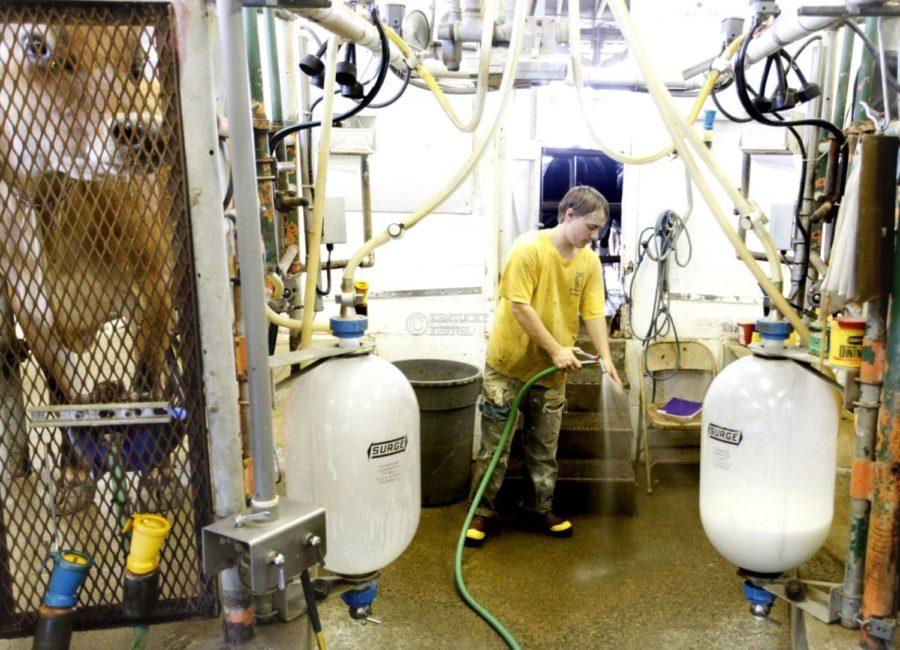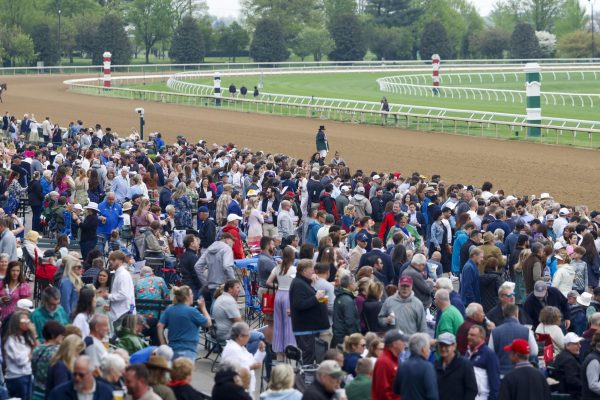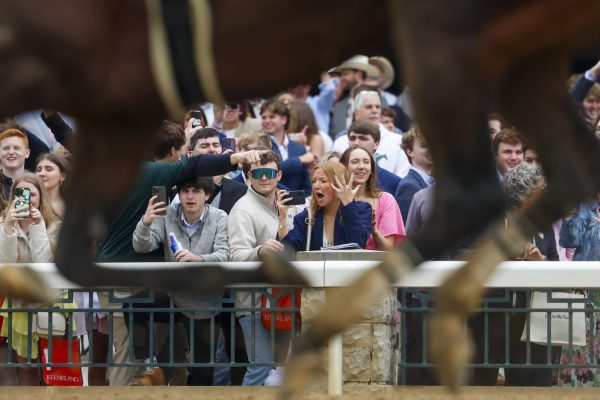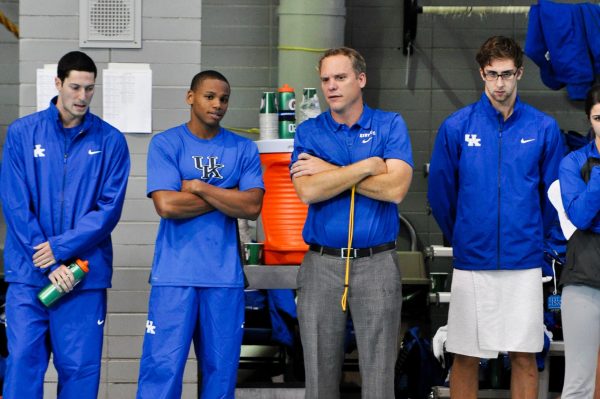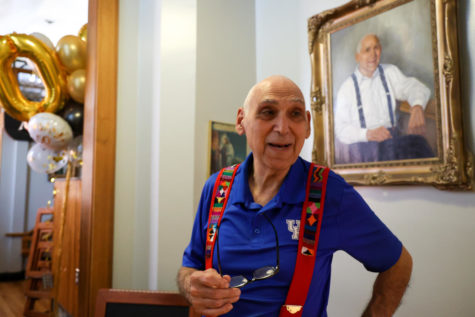Milking the attention: UK heifer becomes national cover girl
September 11, 2009
By Roy York
An award-winning UK club has a new cover girl — heifer calf No. 420.
The calf was featured on the Sept. 10 issue of Hoard’s Dairyman, one of the most widely circulated dairy magazines in the world. The magazine also contains a short profile on the accomplishments and status of the UK Coldstream Dairy Research Farm.
“That little story gives recognition to the program,†said William Silvia, professor and dairy section coordinator for the department of animal and food sciences. “It’s read by dairy farmers across the nation.â€
Silvia said the UK dairy farm and the UK Dairy Club deserve the recognition because the program is consistently ranked as the top milk production farm in the state, even above corporate farms.
In 2009, the Southeastern Holstein-Friesian Association ranked the UK dairy farm as the number one farm in milk production for Holstein and Jersey breeds.
Silvia said the UK dairy farm produces nearly 3,000 gallons of milk every two days. This milk is sold to a local Kroger facility in Winchester, Ky. The farm earns around $365,000 per year and is used to fund the dairy production.
Beka Chmielewski, animal science senior and a member of the Dairy Club, said the UK dairy farm performs so well because of the breeding techniques and the special attention paid to the needs of individual cows.
The breeding of the cows at the UK dairy farm is done by artificial insemination, Silvia said, which allows for the selection of sires that have produced high-production dairy cows.
The production for every individual cow is recorded and studied by Silvia and his colleagues to ensure that only the sires with the best pedigree are used for breeding.
In addition to choice breeding, Silvia said the UK dairy farm is involved in an ongoing experiment to compare the milk production of purebred and crossbred cows.
Silvia said the breeding experiments could result in cows that can provide more milk more often, are more resistant to infection and deal with the stress of giving mass amounts of milk more effectively.
“Selective breeding determines the maximum amount of milk a cow can give, but their diet and nutrition determines how close we get to that maximum,†Silvia said.
Joey Clark, manager of the UK dairy farm, regiments a strict diet for the cows.
“The needs of the cows are paramount and feeding is critical,†Clark said. “They’re basically like my children … I know most of these cows by sight.â€
Silvia said the dairy also provides certain comforts for the cows to encourage higher milk production. Cows are kept cool by awnings that provide shade and a sprinkler system on the awnings.
“Milk production is directly related to how much food the cows eat,†Silvia said. “Cows don’t eat if they’re too hot.â€












































































































































